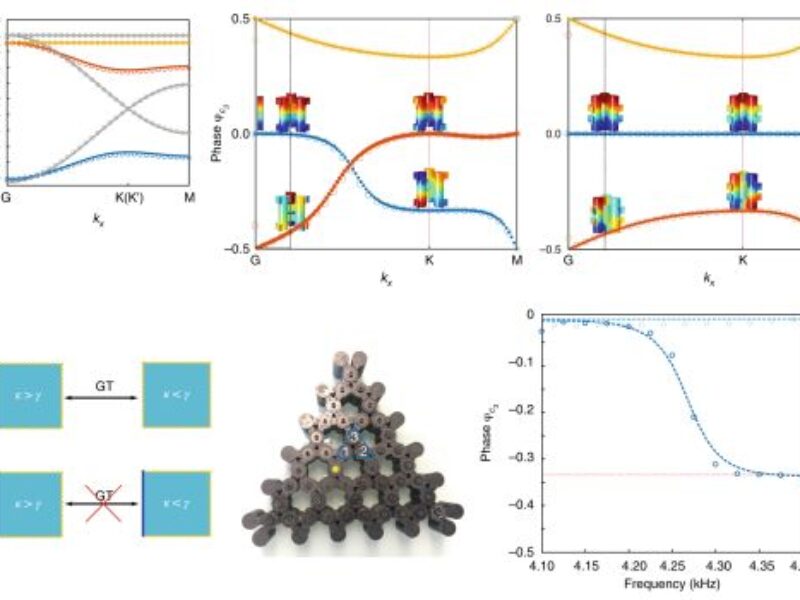
New metamaterial offers inherently robust sound transport
The newly engineered material, say the researchers, creates a robust acoustic structure that can control in unusual ways the propagation and localization of sound even when fabrication imperfections exist. This offers the potential to improve technologies that use sound waves, such as sonars and ultrasound devices, making them more resistant to defects.
“We’re showing, fundamentally, that it is possible to enable new forms of sound transport that are much more robust than what we are used to,” says Andrea Alù, director of the Photonics Initiative at City University’s Advanced Science Research Center. “These findings may find applications in ultrasound imaging, underwater acoustics, and sonar technology.”
The researchers designed the metamaterial using the mathematical field of topology – the study of objects unaffected by continuous deformations. For example, say the researchers, a straw and a donut are topologically equivalent as they both have a single hole – each object could be contorted to form the other without adding new holes.
The principals of topology first inspired the researchers to design materials that only carry electric currents along their edges. According to the researchers, the topological nature of their band gap – an energy range in a solid where no electron states can exist – makes these materials’ conductivity resistant to disruption by noise or imperfection.
“There has been a lot of interest in trying to extend these ideas from electric currents to other types of signal transport,” says Alù, “in particular to the fields of topological photonics and topological acoustics. What we are doing is building special acoustic materials that can guide and localize sound in very unusual ways.”
The researchers built their metamaterial using a 3D printer to create a series of tiny trimers – a ring formed by three acoustic resonators. The trimers were then affixed to form a triangular lattice. The symmetry of the trimers and chiral symmetry of the larger lattice structure yielded robust acoustic properties derived from the topology of the metamaterial’s acoustic band gap, say the researchers.
When sound is played at frequencies outside the band gap, the sound is made to travel through the bulk of the metamaterial; but when frequencies within the band gap are played, the sound moves along the edges to the metamaterial’s corners. Importantly, these unique acoustic properties aren’t disrupted by imperfections.
“You could completely remove a corner, and whatever is left will form the lattice’s new corner, and it will still work in a similar way, because of the robustness of these properties,” says Alù.
For more, see “Observation of higher-order topological acoustic states protected by generalized chiral symmetry.
Related articles:
‘Acoustic whirlpool’ device promises low-cost, in-field disease diagnosis
3D-printed ‘cocktail party listener’ picks out voices in a crowd
3D printed electromagnetic metamaterials promise ‘revolution’ in RF design
 If you enjoyed this article, you will like the following ones: don't miss them by subscribing to :
eeNews on Google News
If you enjoyed this article, you will like the following ones: don't miss them by subscribing to :
eeNews on Google News



